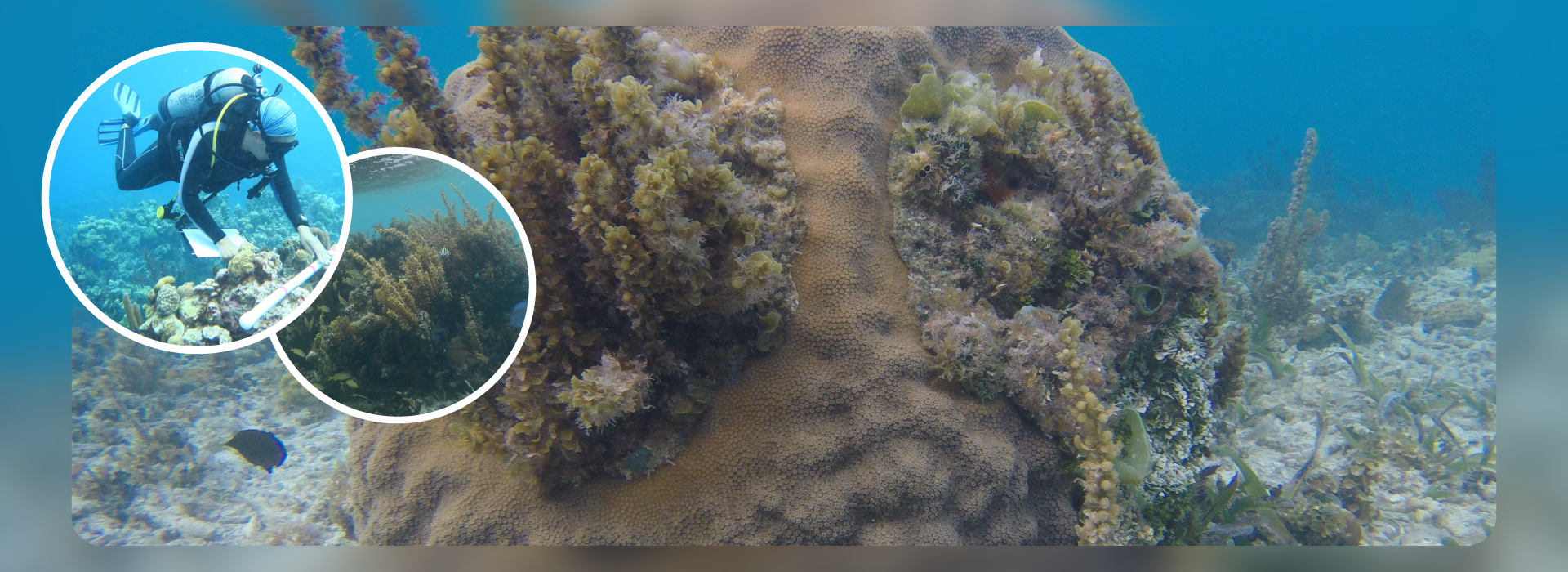01/19/2022
Different Reef, Same Problem
Nitrogen is Killing Coral Reefs in Belize too
By Bethany Augliere
For decades, people have claimed that overfishing of herbivorous fishes — those that scrape the algae off corals — is causing the decline of living coral in the Caribbean region, including off the coast of Belize, said Brian Lapointe, Ph.D., a research professor with FAU’s Harbor Branch Oceanographic Institute. But, based on his latest research, he’s discovered the decline is actually largely due to land-based runoff polluting the water with excess nitrogen.
The Belize Barrier Reef was designated as a UNESCO World Heritage Site in 1996, and is part of the larger Mesoamerican reef, which is second in length only to the Great Barrier Reef in Australia. It stretches more than 700-miles along the coasts of four countries: Mexico, Belize, Guatemala and Honduras. Charles Darwin famously described the Belize Barrier Reef as "the most remarkable reef in the West Indies." But, as of 2018, only about 17% of live coral remains.
Lapointe, who has studied coral reefs since the 1980s, said he’s long suspected that declining water quality, due to sewage, fertilizers and topsoil loss are killing the corals. Compared to other places, “the Caribbean has been the worst hit area for coral reef decline in the world,” he said. In a recently published 30-year study, he confirmed this theory for the Florida Reef Tract. Now, he’s found that the same results hold true in Belize.
In the 1980s, Lapointe took tissue samples of different seaweeds, also known as macroalgae, off the Belize reef and analyzed the nutrient content in the tissues, which would serve as a baseline of nutrient enrichment. Along with his coauthors, he recently collected macroalgae again and analyzed the levels of carbon (C), nitrogen (N) and phosphorus (P), as well as the ratios of those nutrients. He then compared his baseline values to recent samples collected in 2017 and 2019.
Results of the study, recently published in the journal Marine Pollution Bulletin, suggest that N:P ratios doubled over the past 35 years within the main Belize Barrier Reef lagoon, similar to the three-fold increases in N:P of reef macroalgae at Looe Key reef in the lower Florida Keys as well as Sargassum over broad areas of the North Atlantic basin since the 1980s.
There’s more nitrogen and less phosphorus. The increased nitrogen stresses the coral and reduces growth rates, Lapointe said, while the lack of phosphorus means they are metabolically starved for a vital nutrient, resulting in coral bleaching and disease. Additionally, the higher nitrogen levels enhance the growth of the seaweeds leaving large blooms, which are competitors to the corals. The blooms can also suck up all the oxygen out of the water, resulting in dead zones.
“I think this study underscores the sense of urgency, if we're gonna do a better job at protecting the resources of the second longest coral reef in the world,” he said. “It's a world-class resource, it really deserves protection.”
If you would like more information, please contact us at dorcommunications@fau.edu.
